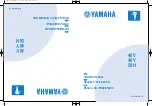
Chapter 4: AMI BIOS
4-13
DRAM RAPL Mode
RAPL (Running Average Power Limit) provides mechanisms to enforce power
consumption limits on supported processors The options are DRAM RAPL
MODE0 ,
DRAM RAPL MODE1
, and Disabled.
DDR Speed
Use this feature to force a DDR3 memory module to run at a frequency other
than what is specified by the manufacturer. The options are
Auto
, Force DDR3
800, Force DDR3 1066, Force DDR3 1333, Force DDR3 1600 and Force SPD.
Channel Interleaving
This feature selects from the different channel interleaving methods. The options
are
Auto
, 1 Way, 2 Way, 3, Way, and 4 Way.
Rank Interleaving
This feature allows the user to select a rank memory interleaving method. The
options are
Auto
, 1 Way, 2 Way, 4, Way, and 8 Way.
Patrol Scrub
Patrol Scrubbing is a process that allows the CPU to correct correctable memory
errors detected on a memory module and send the correction to the requestor
(the original source). When this item is set to Enabled, the IO hub will read and
write back one cache line every 16K cycles, if there is no delay caused by internal
processing. By using this method, roughly 64 GB of memory behind the IO hub
will be scrubbed every day. The options are
Enabled
and Disabled.
Demand Scrub
Demand Scrubbing is a process that allows the CPU to correct correctable
memory errors found on a memory module. When the CPU or I/O issues a
demand-read command, and the read data from memory turns out to be a cor-
rectable error, then the error is corrected and sent to the requestor (the original
source). Memory is updated as well. Select Enabled to use Demand Scrubbing
for ECC memory correction. The options are Enabled and
Disabled
.
Data Scrambling
Select Enabled to enable data scrambling to ensure data security and integrity.
The options are Disabled and
Enabled
.
Device Tagging
Select Enabled to support device tagging. The options are
Disabled
and En-
abled.















































